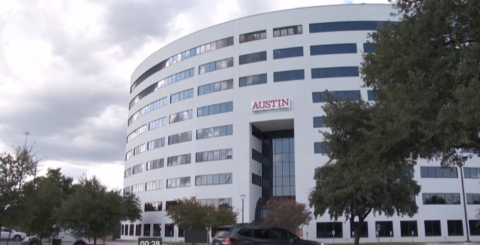
Homeownership remains the primary wealth-building tool for wage earning families. Yet, in too many communities, ownership is denied due to market inflation, equity is stripped by refinancing, financing is still more expensive for people of color due to the legacies of redlining, or unstable income results in foreclosure due to inflexible financing. All of which deprives this wealth building tool from workers, families, and next generations.
Moreover, in many markets, rental and ownership are not separated by a chasm. For many communities and cities, homeownership can be less expensive than renting. On the other hand, in many of the largest urban areas, quality affordable rental housing leaves one with disposable cash, where saving or investing it is a better choice for asset building.
It’s important to remember homeownership is not just about the single family housing you reside in. Millions of renters have landlords, who are low and middle income themselves and whose wealth is invested in the property. Affordable housing allows strained income to stretch further, allowing for savings or future asset building goals and helping relieve the adverse health effects a person experiences from housing instability, economic uncertainty, and stress.
Available housing choices increase or limit financial security. The goal of equitable wealth building is a continuum of affordable, timely, and sustainable ownership and rental opportunities. The lingering effects of redlining and discrimination need to be assertively reversed. There are proven tools to make home-buying easier and renting of quality affordable housing more beneficial. New innovations are needed to ensure equity. Philanthropic investment in financial products, housing, loan loss reserves and in non-profit financial institutions making responsive products available are key factors.
Why It’s Important
AFN members collaborate to understand and promote strategies that ensure quality housing is accessible to families of all income levels.
Increased family stability
Increased community stability
More wealth passed between generations
More stability in classrooms
Increased saving and healthy credit behavior
Tax benefits for homeowners
Grantmaking Strategies
Not all forms of homeownership are equal. Jim Crow, federal redlining, and real estate and banking practices that continued economic discrimination benefitting White homeowners redlining in practice while being punitive to Black, Latinx, Asian, and Native households across the country. The existing loan markets make this worse with unresponsive policies to income variations, as well as the continued undervaluing of houses in communities of color or owned by persons of color. These have caused less stability for families, not more – leading many to question homeownership as an equitable wealth-building strategy. Philanthropy driving the necessary market reimagining and policy reform to create equitable asset building options is needed.
There are many systemic issues. Despite the outlawing of formal redlining, home appraisals in communities of color and to owners of color continue to be assigned lower values. Studies show mortgages remain both more difficult, and more expensive, for people of color to get. It is the definition of a racially inequitable market.
The economic losses in past recessions, coupled with predatory lending practices, caused wealth to be stripped and homeownership among people of color to drop. Less wealth building from homeownership by Blacks, Latinos, and Native Americans typically means less overall wealth and intergenerational transfer. Yet, homeownership, if equitable, can provide stability and a steady path to wealth building as the largest asset most families will ever own.
The barriers to ownership, rooted in systemic racism and its legacy practices, can be uprooted. Culturally appropriate ownership through cooperatives and land trusts remain a solution for some communities, and with philanthropic support is being tentatively expanded. Access to down payment assistance, reasonable loan terms comparable to those given to White families, mortgages reflecting variable income (wage) flows rampant in today’s employment, and community based supports for maintenance of the property can create pathways for homeownership to be a powerful way to reduce the racial wealth gap in many communities. And of course, these remain separate and distinct from equitable asset building effects of baby bonds, guaranteed income, or reparations.
Equitable reimagining of the future of wealth building also calls for systemic solutions relieving the financial pressures leading to refinancing that eliminates equity built up. It also establishes creative community services to protect their investments and enforce existing legal protections from the unscrupulous.
The best homeownership programs include a suite of services: safe, healthy and affordable housing inventory, fair mortgage products, and support for home-owning through education and guidance tied to the down payment assistance or affordable loan product and a trusted financial coach. Grantmakers investing in housing opportunities for low and middle income families can focus on down payment assistance, support for small dollar mortgages and rehab loans, funding of credit unions and community development financial institutions (CDFIs) to scale their more flexible homeownership and community development tools. By funding innovation, engaging in advocacy to ensure safe mortgage products and reduced predation, and seeding programs that offer affordable ownership models (mortgages, cooperatives, and land trusts) supported by non-predatory maintenance and repair services, funders will advance equity. These strategies will repair the effects of systemic discrimination of past financial and real estate markets and public policies.
Not everyone, nor every market, is in a place to support quality affordable homeownership. Grantmakers and public officials also need to give serious attention to healthy, affordable, quality rental options. Affordable housing simply increases renters’ disposable income to allow them to afford investing in asset building for themselves and the next generation. For some families in select innovative markets, renter equity in lieu of rent increases is one alternative to homeownership. In others, rent increases can be controlled by public policy to remain affordable. Or public and private investments can keep rents affordable by making operations of low and middle income and nonprofit landlords less costly, ensuring the savings are passed down into the rent.
AFN members understand and promote strategies and policies like these to uphold a more equitable, quality housing market to families of all income levels. We will continue to explore avenues of innovation for yet undiscovered equitable strategies.
““Investing in the spectrum of housing needs is critical and urgent. We must be bold, innovative, and unwavering in supporting rental stability for individuals and families and creating pathways to affordable homeownership. Our efforts must be rooted in the belief that each of us deserves a life of health, hope, and prosperity.”
Marisa Magallanez | Albuquerque Community Foundation


